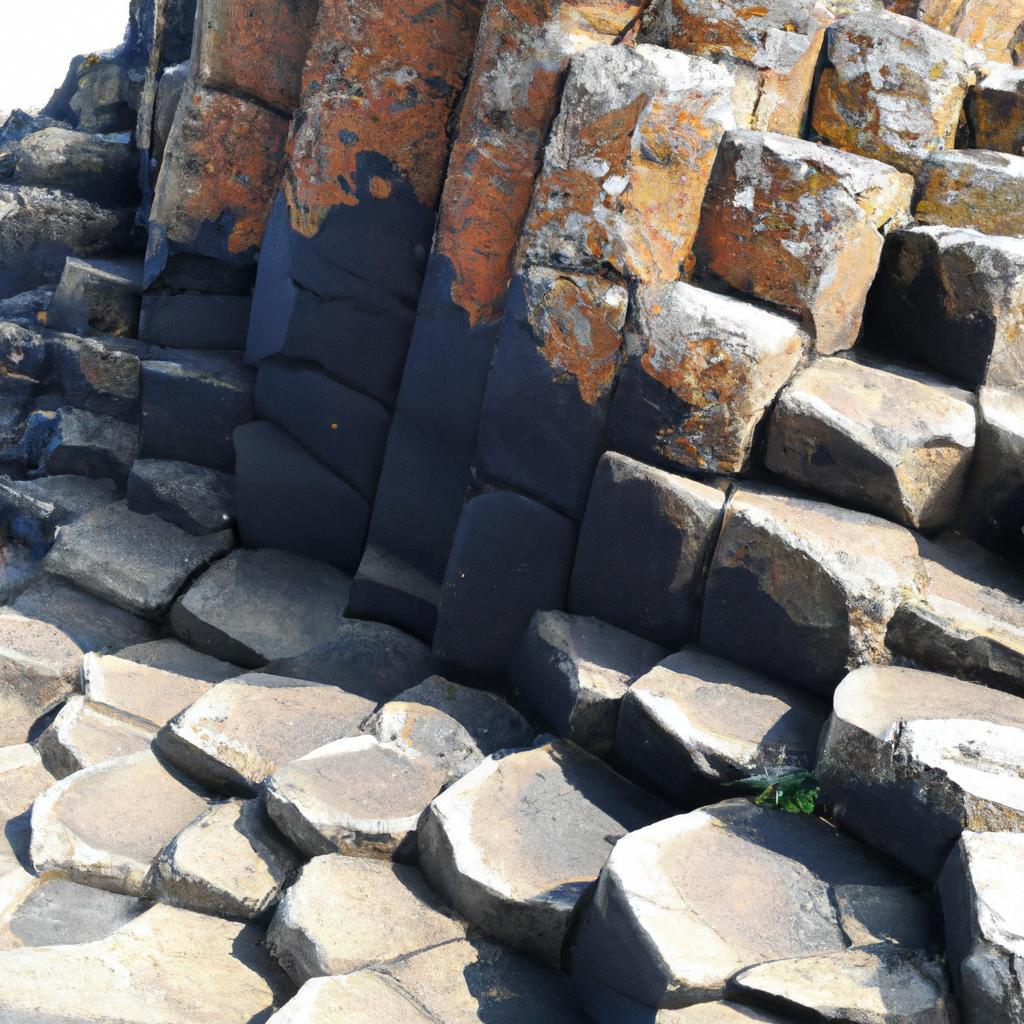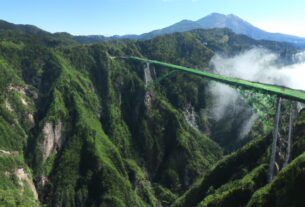Introduction
The Giant’s Causeway has captivated the imaginations of tourists in Northern Ireland, attracting over a million visitors annually. The awe-inspiring geological formation features around 40,000 hexagonal columns that serve as stepping stones, leading from the cliff foot and vanishing beneath the sea. But how was this unique wonder formed? In this article, we will delve into the geological backdrop of the area and explore various theories surrounding the creation of the Giant’s Causeway.
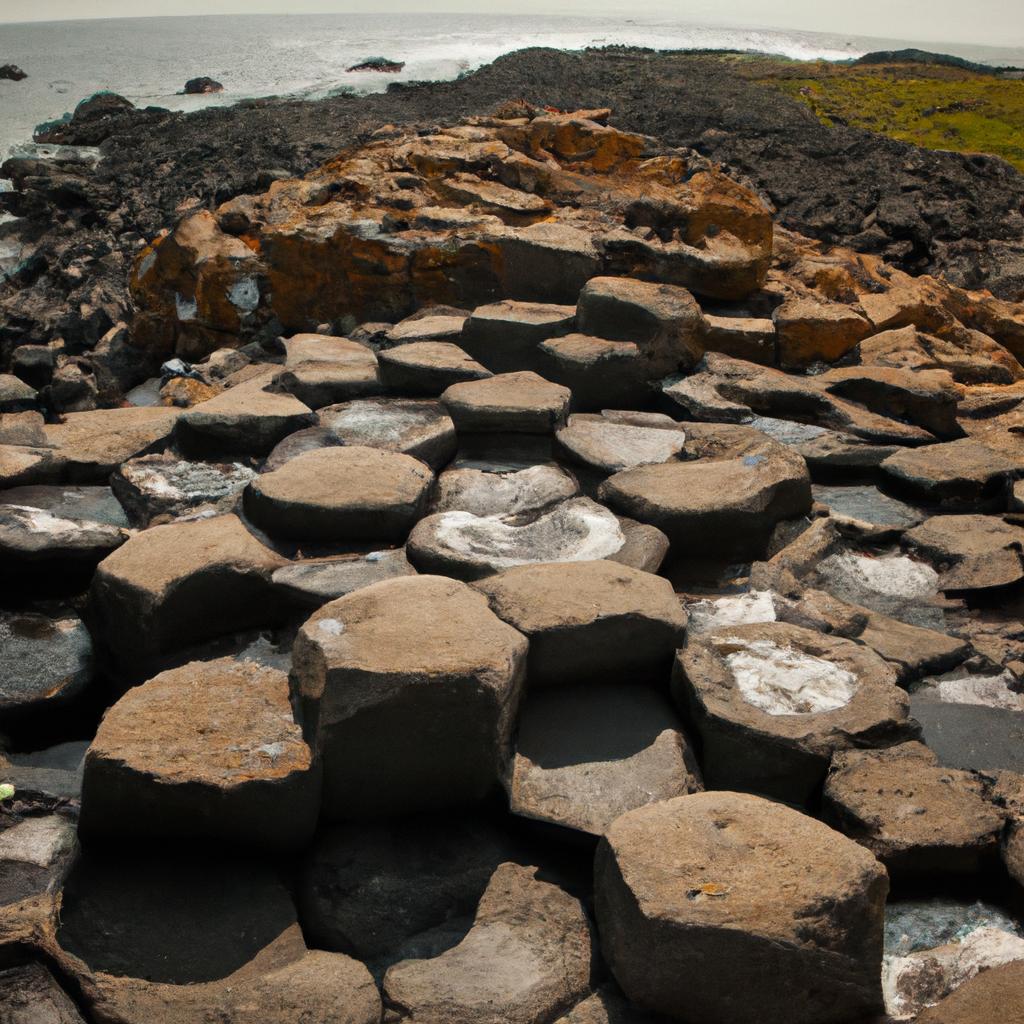
Geological Background
Situated on the northern coast of Northern Ireland, the Giant’s Causeway is part of the Antrim Plateau. This region comprises layers of basaltic lava, which took shape approximately 60 million years ago during the Paleogene period, as a result of volcanic activity. Alongside the Giant’s Causeway, the Antrim Plateau boasts a multitude of geological formations, including cliffs, beaches, and caves. Standing out among them all is the Giant’s Causeway itself. The Causeway is composed of hexagonal columns, measuring around 12 inches in diameter. These columns are constructed from basalt, a dark volcanic rock enriched with iron and magnesium. Arranged in a honeycomb-like pattern, they interlock, giving rise to a solid and impressive structure.
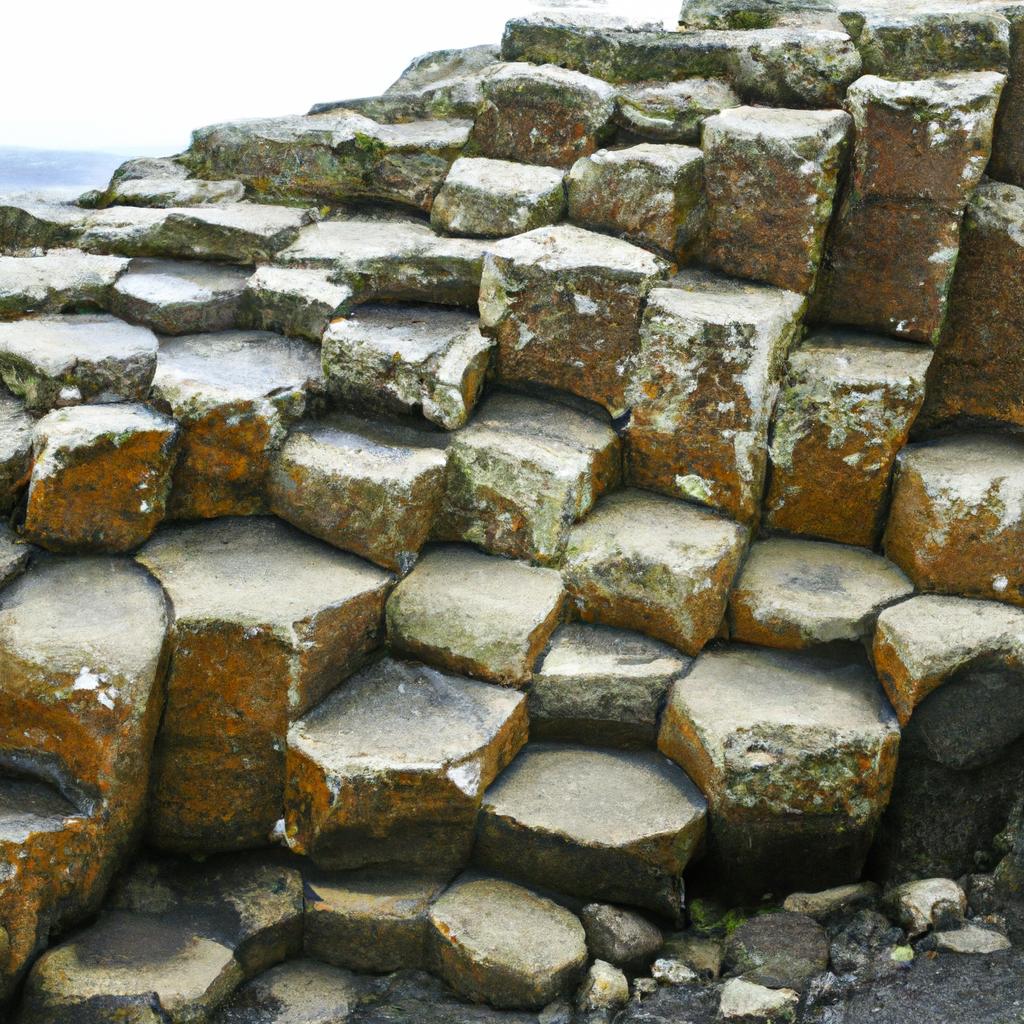
Theories of the Giant’s Causeway Formation
Volcanic Theory
The volcanic theory reigns as one of the most widely embraced explanations for the formation of the Giant’s Causeway. According to this theory, the area was once a volcanic landscape, with the columns forming as a result of lava cooling and contracting.
As the theory goes, the Antrim Plateau was once covered in molten lava, which flowed across the landscape. As the lava cooled, it began to contract, giving birth to the hexagonal columns as it solidified. Over time, the surrounding rock eroded away, exposing the columns, ultimately creating the remarkable stepping-stones that grace the landscape today.
Evidence supporting this theory can be found in the basaltic rock formations found throughout the Antrim Plateau. Basalt, a volcanic rock formed from lava flows, is renowned for its distinctive hexagonal shapes. Given that the columns of the Giant’s Causeway also possess a hexagonal form, it suggests a similar creation process to other basaltic formations.
Plate Tectonic Theory
The plate tectonic theory offers an alternative explanation for the Giant’s Causeway’s formation, suggesting that the columns were shaped due to the movement of Earth’s tectonic plates.
As per this theory, the landmass containing the Antrim Plateau once existed near the equator, forming part of a larger landmass. Over time, this landmass began to move, ultimately colliding with another landmass. This collision caused the Earth’s crust to buckle and fold. The resulting pressure caused magma to rise through the cracks in the crust, forming the basaltic rock formations on the Antrim Plateau.
The columns of the Giant’s Causeway were then formed through the cooling and contraction of the magma. As the magma solidified, it shaped hexagonal columns that interlocked with one another, giving rise to the extraordinary stepping-stones seen today.
While the plate tectonic theory has garnered less consensus than the volcanic theory, it remains a plausible explanation for the Giant’s Causeway’s formation.
How the Giant’s Causeway Truly Formed
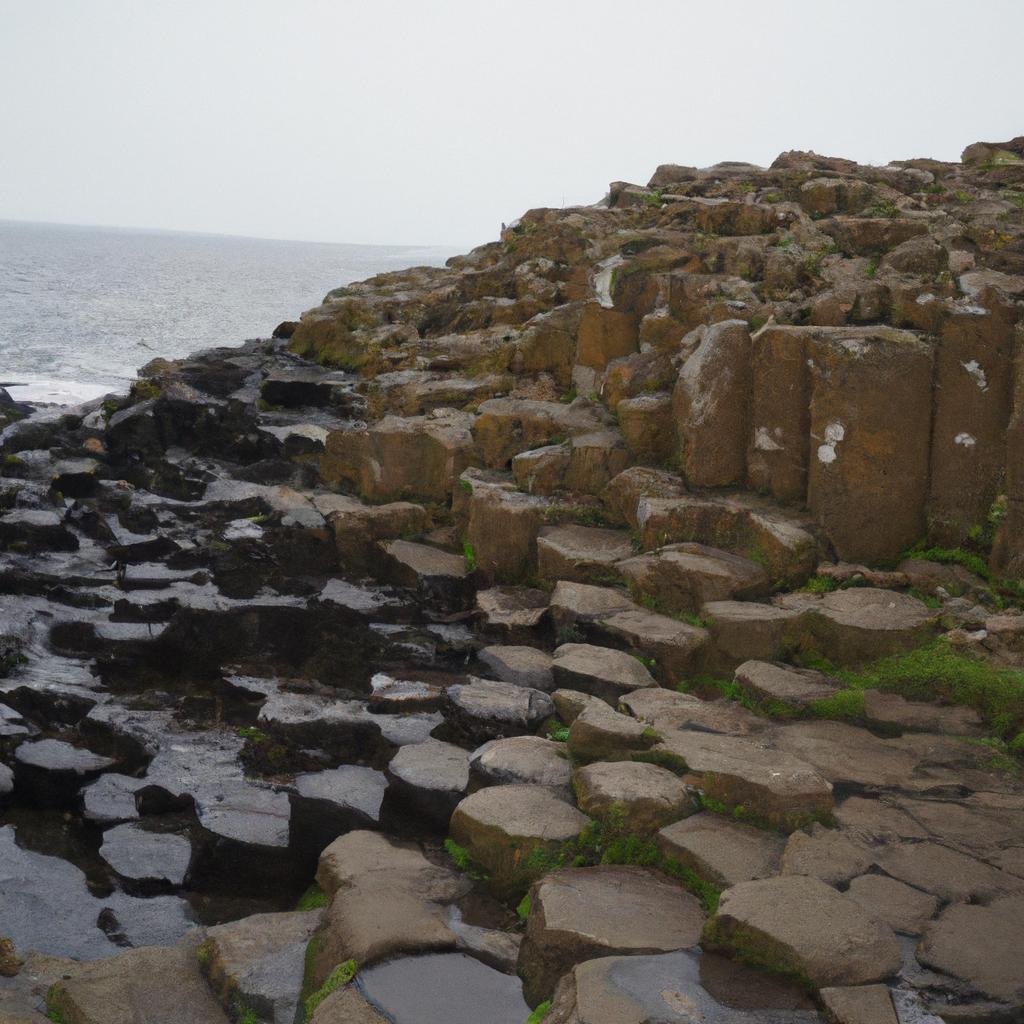
Introduction
The Giant’s Causeway captivates over a million tourists annually in Northern Ireland. With approximately 40,000 hexagonal columns forming stepping stones immersed in the sea, this geological wonder enthralls all who encounter it. But how did such a unique formation arise? This article will explore the geological background of the area and unravel different theories about the Giant’s Causeway’s formation.
Geological Background
The Giant’s Causeway, situated on Northern Ireland’s northern coast, resides within the Antrim Plateau. This region comprises layers of basaltic lava dating back 60 million years to the Paleogene period, birthed from volcanic activity. Accompanying the Giant’s Causeway, the Antrim Plateau boasts numerous geological formations, including cliffs, beaches, and caves. The Giant’s Causeway itself consists of hexagonal columns with a diameter of about 12 inches. The columns, constructed from basalt, a dark volcanic rock enriched with iron and magnesium, interlock in a honeycomb-like pattern to form an impressive and solid structure.
Theories of Giant’s Causeway Formation
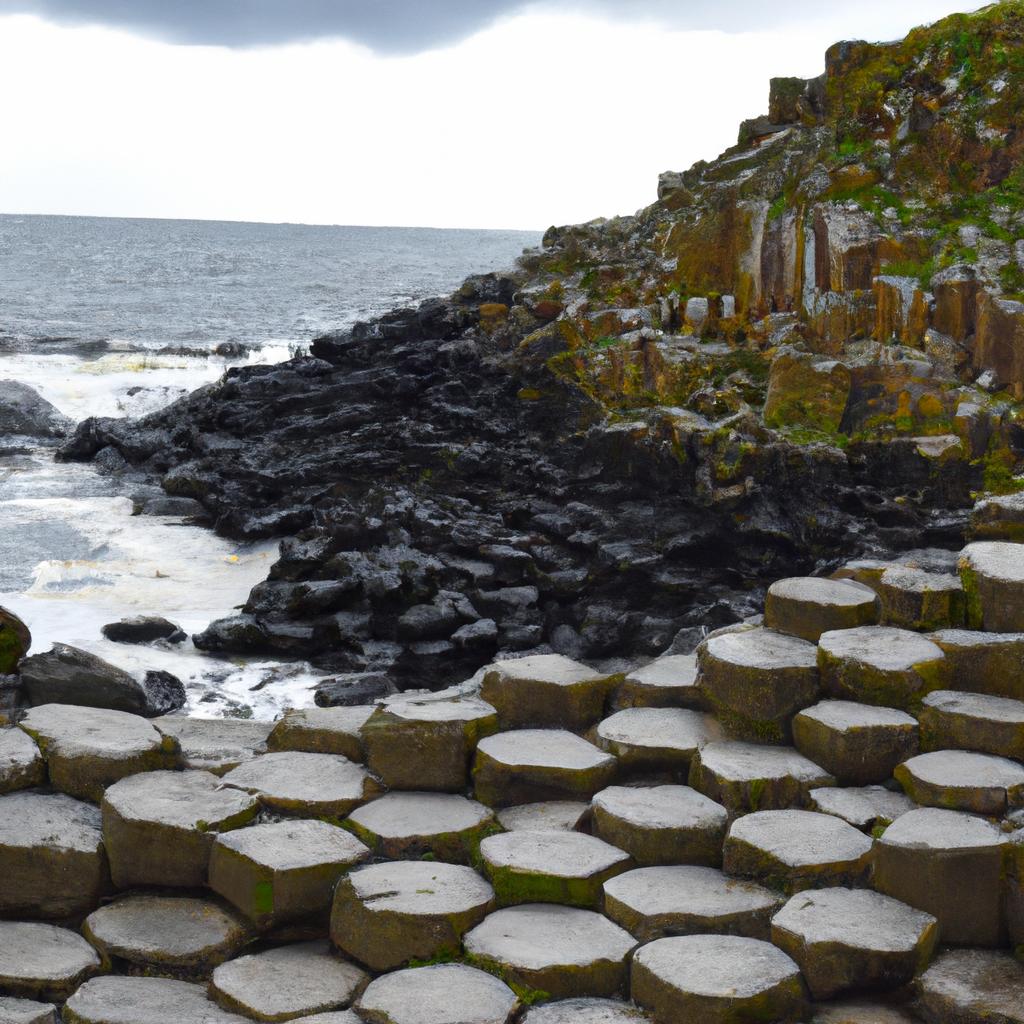
Volcanic Theory
The volcanic theory prevails as one of the most widely accepted explanations for the Giant’s Causeway’s formation. It posits that the area once manifested as a volcanic landscape, with columns forming from the cooling and contraction of lava.
This theory suggests that molten lava once blanketed the Antrim Plateau, flowing across the landscape. Subsequently, as the lava cooled, it contracted, resulting in the formation of hexagonal columns during the solidification process. Throughout time, the surrounding rock eroded, unveiling the columns, ultimately sculpting the distinguished stepping-stones visible today.
Supporting this theory is the presence of basaltic rock formations littered across the Antrim Plateau. Basalt, renowned for its hexagonal shapes, originates from lava flows. Given the hexagonal form exhibited by the Giant’s Causeway columns, it implies a conception akin to other basaltic formations.
Plate Tectonic Theory
The plate tectonic theory introduces another perspective on the Giant’s Causeway’s formation, asserting that the columns arose due to the movement of Earth’s tectonic plates.
According to this theory, the Antrim Plateau’s landmass previously neighbored the equator, comprising a larger landmass. Over time, this landmass embarked on a journey, eventually colliding with another, leading to the buckling and folding of the Earth’s crust. The resulting pressure facilitated magma’s ascent through crustal cracks, fashioning basaltic rock formations across the Antrim Plateau.
The Giant’s Causeway columns emerged from the cooling and contraction of the magma. As the magma solidified, it sculpted hexagonal columns that interlocked, forming the distinct stepping-stones witnessed today.
While the plate tectonic theory garners less widespread acceptance than the volcanic theory, it offers a plausible explanation for the Giant’s Causeway’s formation.
Unraveling the Formation of the Giant’s Causeway
Introduction
The Giant’s Causeway enthralls tourists in Northern Ireland, welcoming over a million visitors annually. This natural wonder comprises around 40,000 hexagonal columns, forming stepping stones that stretch from the cliff foot, eventually disappearing into the sea. Nevertheless, the question lingers: How did this remarkable formation come to be? In this article, we will explore the geological background of the area and various theories surrounding the formation of the Giant’s Causeway.
Glacial Theory
Another theory proposes glacial activity as the driving force behind the Giant’s Causeway’s formation. This theory suggests that columns were created by glaciers during the last ice age, approximately 20,000 years ago. According to this hypothesis, as the glaciers advanced, they broke off rock fragments, carrying them along during their movement. With the ice eventually melting, these fragments were deposited, forming the columns of the Giant’s Causeway.
Despite evidence of glacial activity, such as the presence of glacial deposits in the area, many experts find this theory unlikely. The uniformity in size and shape of the Giant’s Causeway columns contradicts the notion that random glacier movements could have created them. Additionally, no evidence of glacial activity can be found in the immediate vicinity of the Causeway.
Conclusion
In conclusion, the formation of the Giant’s Causeway continues to spark debates among scientists. While the volcanic theory stands as the most widely accepted explanation, alternate theories, such as the glacial theory, persist. Nevertheless, the current scientific consensus favors the volcanic theory, attributing the columns’ creation to volcanic activity.
Regardless of the precise mechanism behind the Giant’s Causeway’s formation, it remains a captivating wonder and a cherished tourist attraction. Acknowledging its significance, the TooLacks team hopes this article has provided you with a deeper understanding of the area’s geological background and the various theories underpinning the Giant’s Causeway’s formation.
